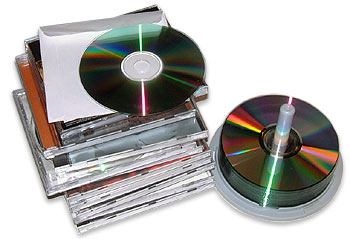Beginners Guides: Creating MP3 Music
Files
Quick and simple instructions on how
to make MP3s out of your CDs, and make MP3s into audio CDs back again. - Version
1.0.0
Everyone
has heard of MP3. For the last 5 or 6 years, it has been the most publicized
topic concerning the computer world. From MP3 sharing vs. theft and RIAA
lawsuits to the ease and convenience of carrying your entire musical library with you wherever you go, MP3 has got people's
attention.
Like many
popular computer subjects however, it is not necessarily widely understood once
you get past the sound bites and buzzwords. Ask anyone off the street about MP3s
in the news, and you will no doubt get a knowledgeable nod and an opinion, but
ask them what MP3 files really are and
how they are made, and you would be more likely to get a shrug than
facts.
There is a
lack of easily accessible, non-technical information about what MP3 files are,
how they can be made and used, and the legal issues surrounding them. In this
guide, PCstats aim to clear up those questions, starting with an easy
definition; what is an MP3 file?
An MP3 file is a compressed version
of a digital audio recording, such as a track from a CD. The original
song data is 'encoded' using a variety of techniques that reduce the size
of the resulting file while preserving much of the (perceptible) sound quality of
the original.
 Perceptible sound
quality?
Perceptible sound
quality?
Digitized audio is governed by bit-rate, or
the amount of song data that is transferred per second to the
device that is playing the song. A digital audio recording using the
'Redbook' audio CD standard uses 1.4 million bits of data per second. This is
the amount of information necessary to play a virtually identical digitized version
of the original analog music.
The MP3 format reduces this bit-rate by a
factor of ten or more, while retaining much of the essential qualities of the
audio. The secret to this is analyzing the frequency of the sounds
contained in the CD track.
Any audio recording is likely to contain various noises,
incidental or otherwise, that are of a frequency we cannot perceive. Likewise, any multi-track audio
recording is likely to have portions where one track drowns out others
due to its volume at that point. MP3 encoders analyze the frequency
pattern of an audio file and filter out sections of the file
which would be difficult or impossible for us to
hear.
Essentially, the MP3 format reduces the size of audio files by
'biasing' them for human hearing, stripping them down to the essential, easily
audible frequencies which would be all we would generally hear anyway. The
resulting file is then compressed using more traditional software
methods.
We can levy some control over
the sound quality of an MP3 by adjusting the sampling frequency (typically
44kHz) and bitrate (64kb/s - 196kb/s, and in some cases as high
as 320kb/s) when the MP3 audio file is originally being encoded, which
can dramatically impact on the end result. Though just as vinyl records are
considered superior to the Compact Disk, CDs are superior to most MP3
recordings; choosing the right encoding settings narrows the gap significantly
however.

